Mobile Photography Interview – A Day In The Life Of Meri Walker – A Fabulously Proficient Mobile Photographer
Welcome to our very exciting interview column on theappwhisperer.com. This section entitled “A Day in the Life of…” is where we take a look at some hugely influential, interesting and accomplished individuals in the mobile photography and art world… people that we think you will love to learn more about. This is our 117th installment of the series. If you have missed our previous interviews, please go here.
Today we are featuring Meri Walker, a fabulous artist who boasts a huge portfolio of first-rate work. Walker has led a very full life with a multitude of experiences, I will let her explain, in her own words a little about her background.
“I grew up on a multi-lingual multi-national street in Washington, DC, in the 1950s with a lot of diplomats’ kids. My brother and I were the only native speakers of English which cast me into a role as a kid that I didn’t understand until I was about 40. My parents both had big Washington careers, so I had a lot of time to figure things out on my own. I started teaching people to do things as I was learning to do them starting about age six. The adult available to do homework with me was our beloved housekeeper, Cornelia, and she couldn’t read or write. So, as I learned, I taught her. That process and the beauty of the relationship grooved my brain in ways I barely understand. It seems to have made me a pretty good coach.
I got a multi-dimensional public education in Washington and then the family moved to Sarasota, Florida, after my father had a heart attack. Dad did genetics research, Mom did public relations for the Ringling Museum of Art, and my brother and I went to junior and high school with a lot of circus kids, artists’ kids, musicians’ kids and some kids whose parents were merchants and truck farmers. It was a big shift for city kids. My father died when I was 15 and my mother died 10 years later.
I was exposed to art constantly in Washington and then at the Ringling Museum in Sarasota. I met Jerry Uelsmann when he had a major exhibition at the Ringling when I was still a teenager. His prints blew my mind to shreds, but I filed the experience away with all my other museum and gallery experiences because, as my mother told me until the day she died, “We don’t have artists in this family.”
I studied journalism, English, philosophy and education in college and as soon as I graduated, I married a dropout with a four-year-old daughter. Long-story short, I bought a 35mm camera to take slides as we toured the US for two years in our VW bus, living the hippie life. On that journey, I became addicted to using a camera to help me see – instead of thinking about – what’s right in front of me.
When we returned to Georgia, I studied photography briefly with Robert Nix at the University of Georgia and then started a freelance photographic career while I helped my husband with his construction business and raised his daughter and our multiply handicapped son. I got some wonderful assignments, attended workshops with master photographers whenever I could, taught myself to shoot and print like Jerry Uelsmann, started showing fine art photographs and sold stock photos. Then, in the early 80’s, the family carted everything across the country to Austin,Texas, where I taught photography at the University of Texas while earning a Master’s degree.
I never meant to stay in Austin, but when I finished at UT, my husband and I divorced and I made my first foray into the Internet. This was 1986, long before we had anything like a graphical browser or a search engine. Some IBM friends connected me from home with a listserv in Australia where photographers from around the world were sharing recipes and practices for alternative photographic printmaking. I sold some prints, put together a few award-winning exhibitions, and learned how to participate in that photographic list server. The photographic listserv experience was my initiation into “sharing intelligence” and “learning globally” with people who didn’t live anywhere near me. It was intoxicating and it completely transformed my understanding of human generosity and creativity. I signed the original Cluetrain Manifesto and became an active participant in the co-creation of things we now take for granted: “websites,” “blogs,” “desktop publishing,” “collaborative work,” “social learning,” “virtual meetings,” and ultimately, “social media.”
None of us could see mobile art coming down the road back then. But it’s easy to look back now and see that these fields laid the foundation for the revolution we’re experiencing now in mobile communication and mobile art.
I couldn’t support myself and my chronically ill child on my own as an artist, so as the desktop computing/publishing revolution began, I learned to run and/or bike Austin mornings and managed communication for a variety of associations, corporations and mid-sized businesses with home bases in Austin. I ran community relations for a large hospital, edited and art-directed a business monthly, managed the copy platform for a major PC-clone manufacturer, co-authored a best-selling business book about teamwork, facilitated strategic planning for large technology companies, designed a lot of brochures and specialty product packaging, and did a lot of public speaking.
As time went on, I sold all my darkroom equipment, put down my cameras and spent more and more of my life on the internet. I used Photoshop from its first release to develop and alter images I shot. But I’ve never enjoyed Photoshop because it works like engineers think, not artists. In 1990, I pioneered a printmaking process that used Canon laser printers to transfer photographic imagery using a polymer sheet. But Canon wasn’t much interested at that time in talking with artists about creative applications of business machines. I taught photography in the summers in Europe and focused my attention back in the States on helping smart people work together in teams and use the internet to communicate globally.
Twenty-five years into this routine, I had lost my son, earned a lot of accolades and money, had disc surgery, a small heart attack, a TIA, and acquired chronic fatigue and type-two diabetes. Just before the US economy crashed for the third time in my adult life, I moved to southern Oregon, where I’ve been deliberately learning to live more simply, slowly, and quietly. And make art using a smartphone”.
We couldn’t wait to find out more about Meri, please enjoy the rest of this compelling interview…
Under each image you will find the title and a list of all the apps used, links to these apps are at the end of the article.
Meri Walker
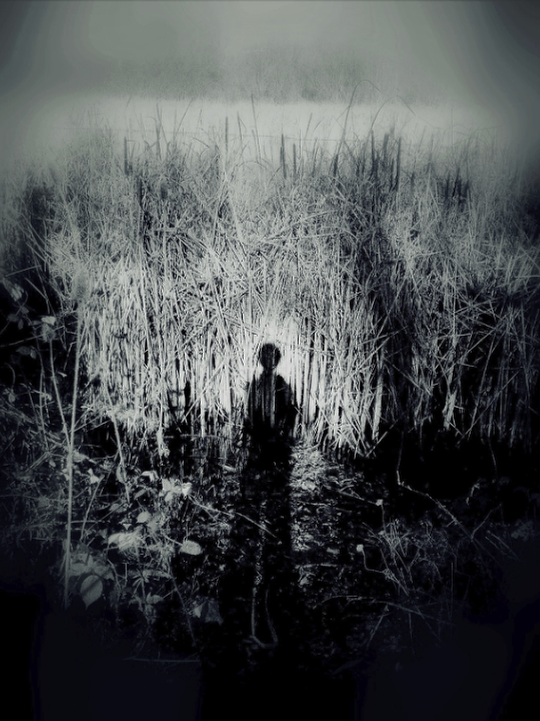
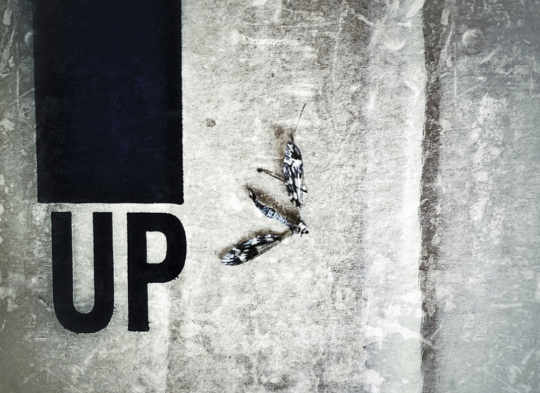
‘Freefall’ ©Meri Walker – Apps used – Camera+, ScratchCam
Let’s start at the beginning of the day, how does your day start?
My day starts with me dripping a steaming cup of coffee to knit body to mind in physical space. Then I slip out back to the field behind my house with my boy, Blaze – usually still in my nightclothes – to greet Mother Nature. By the time Blaze has peed and I’ve breathed in the glory of the morning, the first cup of coffee is gone so we go back inside. I pick up my iPhone to see who else is awake and streaming provocative images to me from around the globe. I use my image-streams (in lieu of morning newspaper) to knit mind to global heart in imagination.
Pretty quickly, Blaze and I head off most days to yoga and then breakfast at one of our great local cafes. While I’m waiting for one of my favorite wait people to bring me more coffee and something to eat, I use my iPhone to savor more friends’ work and to app something I shot the day before. More days than not, I complete a piece of work over breakfast and post it to my Tumblr blog, on Twitter, on EyeEm, to one or more Facebook groups, and to several Flickr groups before I leave the restaurant. I may also post it to Knox Bronson at P1xels.
This is a typical day for the iPhoneArtGirl, living the third act of her life in Talent, Oregon. Not what most of my neighbors are doing around here, but it’s perfect for me.
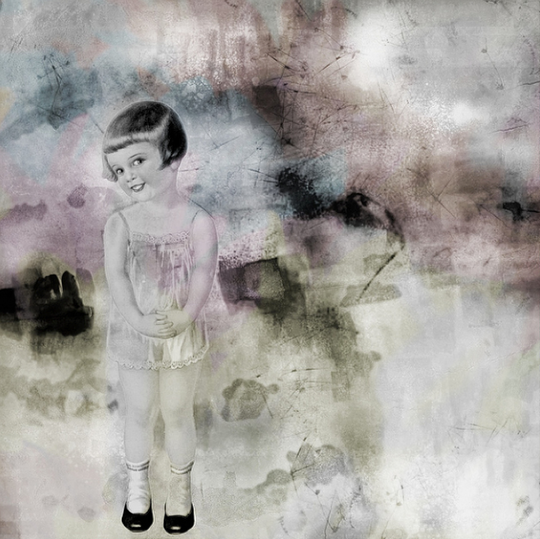
‘Notes to Self, 6: It Was the Bare Legs’ ©Meri Walker – Oggl, PhotoViva, AnalogFilm, Superimposer, iColorama, Afterlight
How did the transition from traditional photographer to mobile photographer develop? (pardon the pun)
I’ve lived about five lives so far in one body. All five lives seem to have spiraled around the exploration of cultural diversity, human creativity, and communication. It’s been a winding road: writing and editing for newspapers, radio, magazines and books; making, publishing and exhibiting photographs and prints; art directing and doing graphic design; teaching; coaching multi-lingual multi-national leadership teams; facilitating online communication, and social learning; and now making and exhibiting mobile artwork.
I recently learned that Vivian Maier called herself, “a kind of a spy.” I might say the same thing about myself: I watch. I ask questions. I respond to what I see and hear. I report. And I help others do the same. These days my own life has begun to interest me as much as others’ lives and I’m using mobile art to explore and report on my own experience as well as others’.
I’ve been a photographer and printmaker for four decades. But when I picked up the iPhone4, some new artist took ahold of my creativity. I started calling her “The iPhoneArtGirl” because she behaves more like a curious child than a professional photographer and she has demanded absolute freedom to shoot whatever interests her in the present moment. Since her passion doesn’t cost much, I’ve let her go where she wants since December, 2010.
After 1200+ days of daily shooting and apping, two years of daily sharing in online social sites, 13 physical exhibits last year, and one or more features on almost every mobile art site on the internet, I’m starting to see some patterns emerging in the work. It’s fascinating to see that there are five passions and that they seem to coincide with the five different careers I’ve had. But the work is nothing like what the person I know myself to have been used to make.
Despite my laisse-faire attitude – allowing the iPhoneArtGirl to have her way with my life after establishing a reputation as a photographer and printmaker – I felt a little ashamed and shy in the beginning about making “serious” art with a smartphone. So I didn’t show it to anyone for about 18 months.
My transition “out of the closet,” so to speak, came when I bought a home in Talent, Oregon, in 2012, set up a small studio, and stumbled into sharing work online. First at EyeEm and then later at MobiTog and iPhoneArt.com. In the spring of last year, friends at EyeEm (the intrepid Brett Chenoweth and Sacha Domen) encouraged me to come into some of the Facebook mobile art groups. At this point, my daily participation on Facebook and Flickr, and keeping two Tumblr blogs, stimulates my creativity in ways I barely understand.
Sharing new work every day and learning with serious mobile artists around the globe reminds me of my initial foray into the internet on an Australian photographic listserv in 1986. Only this time it’s an experience on steroids! The warm welcome from mobile art pioneers like Knox Bronson, Karen Devine, Nettie Edwards, Michael Hill, Carol Smith, Tommy Vohs, Kaaren Malcom, Kim Martino-Diaz, Carolyn Hall Young, Andrea Biagarini – and dozens of others – has given the iPhoneArtGirl an online family to play with and belong to.
Add to this warmth, the exciting opportunity to learn collaboratively in Teresita Alonso Garitz’s remarkable iColorama community – and contribute to her continuous improvement process with that app – and the two of us (the mobile art child and her grandma, the professional photographer) feel like we’ve arrived in the land of milk and honey.
Some old photographer friends and many of my rural neighbors think I’ve lost my mind – or joined the “zombie apocalypse” they believe has taken their children hostage. And I get it.
All around us, human beings of all ages are strongly challenged, trying to manage old-fashioned, face-to-face relationships while building relationships with people who care about what they care about and live somewhere else. People using smartphones to make “real art” surprise everyone – including me! But, it’s just a fact that my iPhone 5S and iPad4 are mind-boggling image-making and digital studio tools. They also give me a direct line, 24/7, to global exhibition opportunities. Given this, I often find my two little “glass-faced-companions” a lot more compelling company than some people who may be sitting in the same room with me. Especially when they’re people whose daily conversation is a litany of complaints about their declining wealth, health, changing technologies, and the evaporation of “young people’s respect” for their soliloquies. Instant access to one’s creative self-expression is a lot more fun than those conversations.
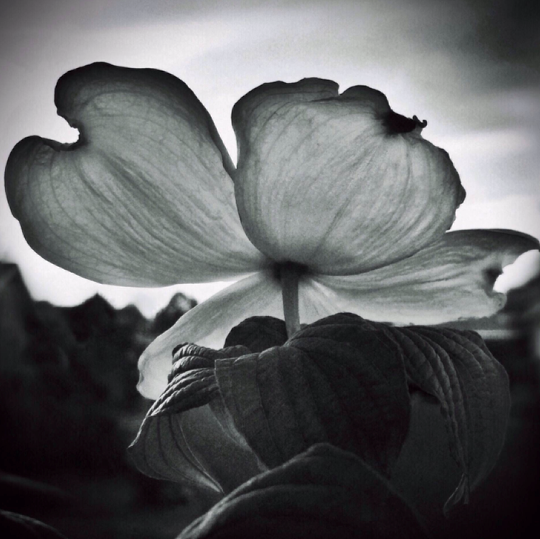
‘The Newborn, 16: Pleasure Ground’ ©Meri Walker – Apps used – LongExpo, Oggl, Perfect B&W, TouchRetouch, Afterlight
Do you like to head out and take photographs early on?
My favorite time to shoot is late afternoon – the golden hour. Blaze and I prowl the garden and then take a walk. I call these excursions, “Afternoon Delight.” Blaze is part shepherd, part border collie, part rhodesian ridgeback. Smart as a whip and the best photographic assistant ever. If the two of us go more than two days without an afternoon walk-and-shoot, we’re both grumpy. Out typical evening routine is me culling through the afternoon shoot after dinner and apping images while Blaze snores away on my feet. More often than is probably healthy, after watching a great film, I fall asleep apping something on the couch or propped up in bed. Having a full-featured digital art studio available to me anywhere I sit down gives me profoundly joy.
(In January of this year, I took a trip down to the Bay Area to meet some mobile photographer friends in person and was delighted to learn that I’m not the only person living this kind of delirium. Petyr Campos told me he often falls asleep the same way I do – with an image open on the iPhone. He told me he’s actually broken a couple of phones this way. So far, I’ve been lucky. Living alone right now, I don’t need to make excuses to anyone about my creative obsessions – which I adore – and it sounds like Petyr’s wife is kind to him about his.)
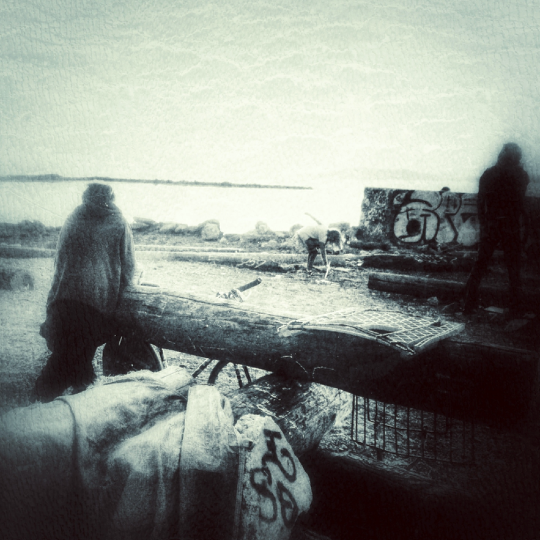
‘Watching the Sunset After the End of the World’ ©Meri Walker – Apps used – ClearCam, Snapseed
What is your preferred platform, Apple iOS, Android, Windows?
I lived 25 years in Austin, TX, before I moved to Oregon in 2006. My last desktop PC bit the dust shortly thereafter. Since I was continually frustrated using Windows- based tablets for graphic work, in 2009, I went back to the Mac platform. In 2010, after 72 hours with an iPhone4, I pledged my undying love to Apple. The best art-making apps are developed and sold first on iOS and I adore the way iOS thinks and works.
At the same time, I do try to keep up with developments on the Android and Windows mobile platforms. I helped teams of engineers develop and market hardware and software on the PC platform from the late ‘80s on. I’ve had a long and fruitful relationship with Google and Google’s online tools. Many of my social media clients and lots of the kids I teach have Android phones and tablets and I’m committed to helping them get as much joy and ease using them as possible. I’ve also looked at the Nokia Lumina and would love to test that camera and some of the other Windows phones.
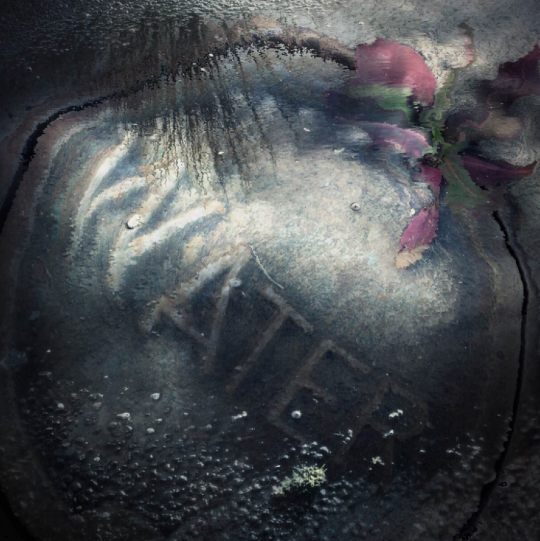
‘While Nero Fiddles’ ©Meri Walker – Apps used – Oggl, iColorama
What are your favourite photography apps and why? What features do you look for in a new photo app?
It’s hard for those of us who are self-avowed app-whores to declare “favorite” apps. I’m an innovation junkie and I love playing with new software. I see good apps as little works of art and I update the ones I own as soon as I notice an update is available.
After 30 years of toting heavy camera bags and using bloated desktop programs, I want mobile art apps to be light and simple. Because they’re cheap, I much prefer to fish through six specialty screwdrivers in my mobile toolbox than futz around with a swiss-army-knife app that does does two or three things well and a lot of things sort-of mediocre. I have a rigorous folder organization on my devices that allows me to find the tools I want quickly.
I can’t live without Snapseed. I adore iColorama. They’re both big, full-featured apps that do a lot of things very well. I also can’t live without PhotoSynch for transferring work from my camera (iPhone) to the studio (iPad) and to the desktop for transmitting files to print.
Snapseed is my go-to-app for almost all “photographic” tasks. I may turn to specialty monochrome apps like Monokrom and Perfect B&W, and I adore the duotone functioning of iColorama for fine-tuning black-and-white shots that I want to render like traditional silver, platinum or paladium prints. But Snapseed allows me to use my film- and paper-development, basic composition, color and focusing skills quickly, simply and fluidly. I applaud Google for buying it and making it available free on multiple platforms. Touch Retouch is as essential on the mobile platform as a spotting brush and Spotone are in a traditional darkroom. I enjoy Leonardo and Afterlight for their clarity filters, Juxtaposer and Superimposer for their simple, easy control of masking and blending functions, and iColorama for everything else in the world of multi-media painting and compositing. One of these days, I’m going to learn to make good use of ProCreate. My favorite cameras are ClearCam, ProCam, Oggl and Long Expo. But I also use others when the occasion requires them. 645 is a fabulous camera that I should use. But the way I’m working with the iPhone, I still want things simpler than that right now when I’m shooting.
Besides these basic tools, I have two dozen other faves I use regularly for speciality editing. I have another three dozen that are perfect for one thing. I log the apps I used for a piece as soon as I complete it and I upload the image and the app log to my blog (iPhoneArtGirl.com). I started that logging practice when I joined iPhoneArt.com because I learned so much from fellow artists who did that there. When IPA closed this winter, I cried for three days and then ported the habit to my blog.
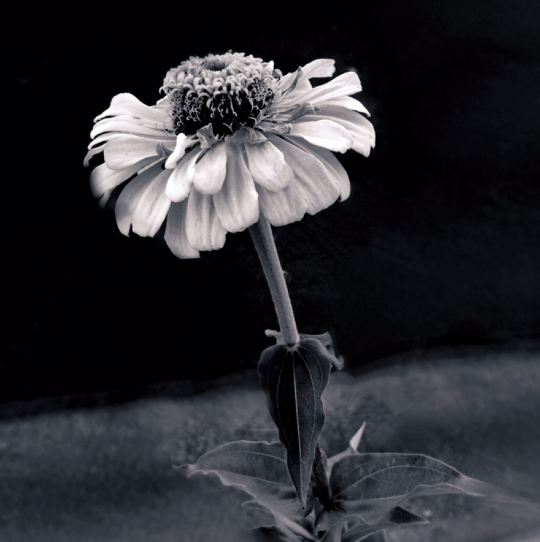
‘Vulnerability’ ©Meri Walker – Apps used – LongExpoSnapseed, TouchRetouch, Analog Film
Where’s your favorite place in the world for a shoot and why?
Wherever I am is my favorite place to shoot. No kidding. Especially with the iPhone in hand, the wisdom I picked up early in my career from Imogene Cunningham is more true than ever: “My favorite photograph is the one I’m going to make next.” The way the simple mobile device supports my curiosity and an awareness of serendipity is, to me, the utter delight of mobile photography. And it’s why, after 40 years toting all kinds of cameras around, I call myself, “iPhoneArtGirl.” I appreciate beautifully engineered cameras, glorious far-away landscapes and bustling big city streets. I love it when I have an opportunity to work in a fully-tooled studio. But I don’t have to wait for any of those things anymore. I can hunt, capture, reveal and exhibit beauty anywhere I find myself with my iPhone.
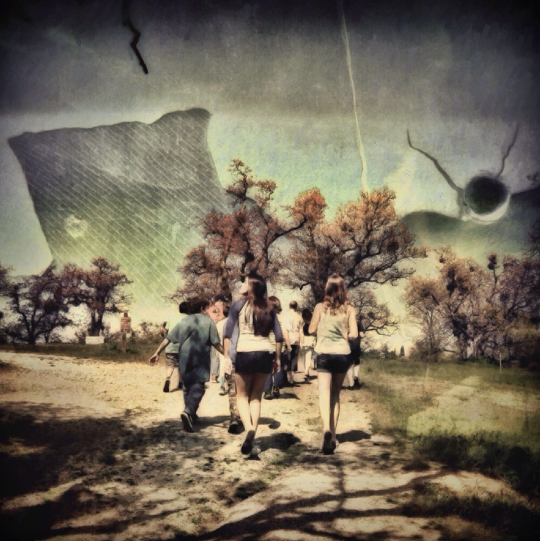
‘The World We’ve Left Them’ – ©Meri Walker – Apps Used – Camera+, iColorama, Snapseed, Afterlight, OldPhoto, Glaze
Do you like to download new mobile photography and/or art apps regularly?
I am rabidly curious about all kinds of photographic and visual-art apps and download new ones so regularly that I have to clean house on my 64 GB iPhone and iPad about once a month in order to have room to make new work and try new apps. I like to say that my mobile devices have set me free. They’re certainly giving me a Photoshop- and desktop-liberation-experience from which I hope never to return. I adore the simplicity of using one tool for one task and using my fingers to edit and paint. It’s just the way I like to work.
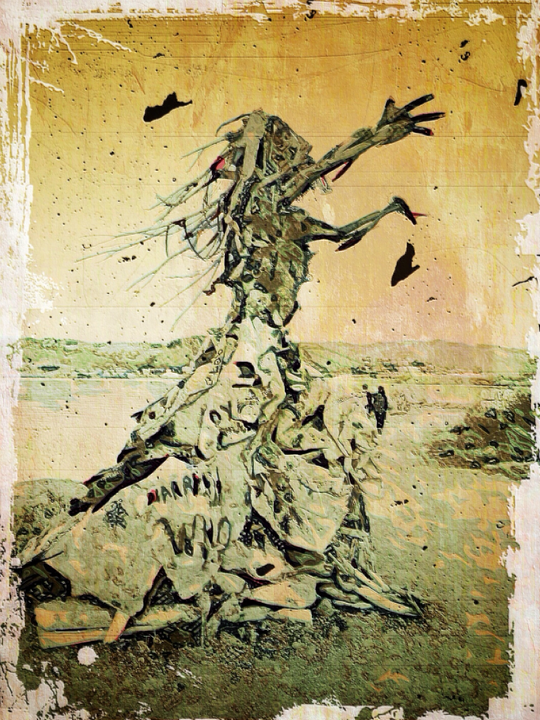
‘The Albany Bulb: No Lifeguard on Duty’ ©Meri Walker – Apps Used – ClearCam, Imaengine, iColorama, Textures+, ScratchCam, Snapseed
Do you like to use external hardware products with your mobile device for image and video capturing, such as lenses, tripods, external storage and battery packs? Please elaborate as much as possible.
I have a small Gorilla-pod and use it when I need to. I haven’t bought any external batteries yet, because I didn’t want to tote them. But I’m threatening to. I acquired a Seagate wireless drive and recently a couple of San Disk Wireless Flash Drives that I’m trying to enjoy. I’m someone who wants to have immediate access to my whole image library everywhere. After three years, I can’t carry it all around in my iPhone and iPad. I’ve backed up into several Cloud sites and onto the wireless drives so I don’t have to carry more than 8,000 images on the devices. That might sound excessive to some folks.
I’ve experimented with a couple of external macro lenses and enjoyed them. But my desire is to be as “gear-free” as possible with the iPhone, so I keep things pretty simple. The cases I use to house my iPhone are my most essential gear. I use a leather flip case on the iPhone that allows me to keep the lens and glass pristine even when I throw it in my purse or pocket but still have fast access. I use a Zagg keyboard with my iPad for stuff besides image editing and I love the way the Zagg case protects the iPad screen. Makes it easy to use it at an angle or I can quickly slip it out to for tight editing.
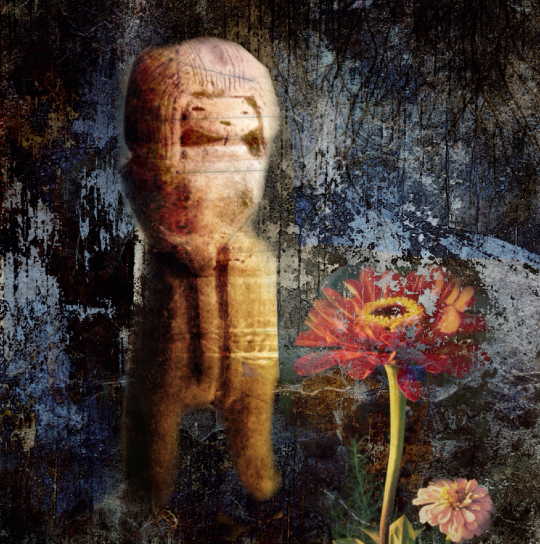
‘Making it Up In Our Secret Worlds’ ©Meri Walker – Apps used – ClearCam, FocusPlus, iColorama, Juxtaposer, Snapseed
Do you edit images on your mobile devices or do you prefer to use a desktop or laptop computer?
I edit only on the mobile devices. In fact, I edit about 75% on the iPhone, even for complex layering work. My eye doctor says I’m going to be sorry, but so far, I’m okay. I love my iPad for complex editing, but I don’t take it out with me because I don’t want people looking over my shoulder while I’m working. That means, if I’m editing away from home, I’m editing in the iPhone. In a coffee shop or restaurant, in the car, on a bench, waiting in line at the gas station, in the doctor’s office… anywhere I’m not already engaged with someone or something else.
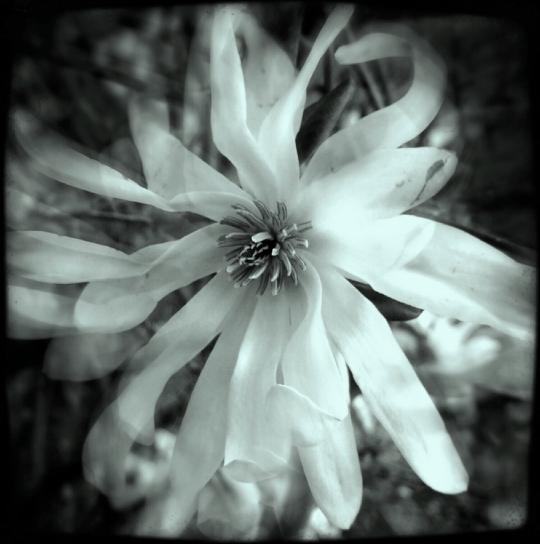
‘So Marilyn Monroe’ – ©Meri Walker – Apps used – LongExpo, Snapseed, Monokrom
Do you also enjoy shooting videos with your mobile phone? If so, what do you do with them? Have you considered uploading them to our Mobile Movies Flickr group?
I wish I could think like a movie-maker, but I just don’t. I love playing with slide-shows and sometimes with video apps. But, at heart, I think like a still-image maker, not a film-maker. When I need a movie, I ask friends who have that genius to make it for me. I’m often encouraging my film-making and sound-editing friends to try out video apps on their iPhones and some are finding real value using them.
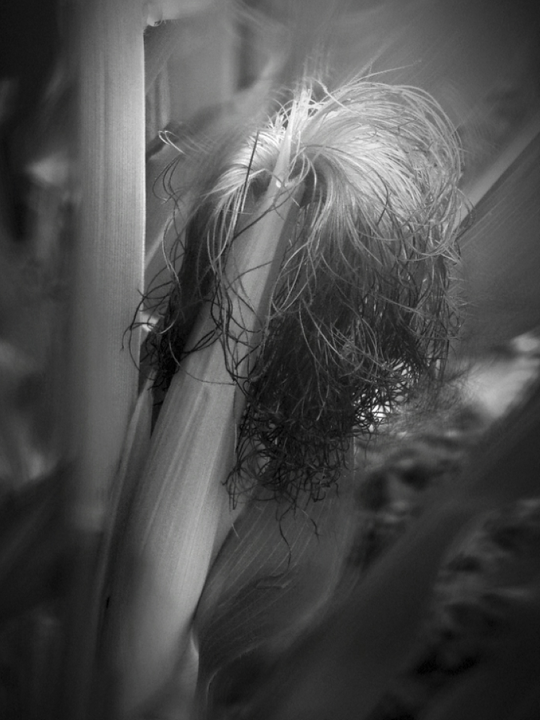
‘Silk’ – ©Meri Walker – Apps Used – LongExp, Vintb&wMII, DramaticB&W
Where do you envisage your mobile photography passion will take you? Have you been involved with exhibitions etc? Please elaborate if you can
This is a complicated subject, passion about mobile photography and exhibition. Answering this question is tricky when it feels like there are two of us involved in this passion – an intelligent curious child who wants to explore new things in new ways and a mature professional photographer with a long and serious career. Maybe my experience is idiosyncratic. But perhaps some of my thoughts will resonate with others. I’d love to hear.
Having been a traditional photographer and printmaker for most of my adult life, I have exhibited, licensed and sold color, silver gelatin, and alternative process photographic prints and serigraphs for four decades. I’ve been honored with the purchase of my work by museums, public and private collections. I’ve published hundreds of photographs in magazines, books and other print publications. So I’m used to exhibiting and publication processes. I’ve also been the fortunate recipient of more than 50 awards and grants in support of my creative work.
Given these experiences, it’s a wonder to me that where I live these days, in rural southern Oregon, the iPhoneArtGirl gets more people viewing her mobile artwork online every day than she could ever get to view it on a wall or in a book. To have 600-1000 people a day engage with the work locally, I’d have to run around naked handing out money. This is a funny thing to say. It’s also a curious fact to contemplate.
The bottom has fallen out of the US art market, magazine photojournalism, the art book market and stock photography. Everyone who’s got a smartphone has got a good enough camera these days and they’re using it to make good enough photos. People of all ages are making their own portraits, instead of going to “the photographer.” We’re telling our own stories, instead of waiting for “the reporter” to tell them or “the editor” to decide what’s important about them. We can buy prints of images we’ve captured in our everyday lives and on the trips we’re taking. We put them on the wall to inspire us, instead of making an investment in other people’s creative vision and skill to beautify our homes and work spaces. And, with the click of a mouse, we can (1) ask a friend if we can use their photo, or (2) spend a couple of dollars on a stock image, or (3) steal other people’s images to illustrate our blogs, websites and brochures.
This is a brave new world for visual artists who want to make a living doing what we love.
In this world, this spring I was named a NEM Artist by the New Era Museum (neweramuseum.org). I couldn’t have been more honored or delighted. NEM is a museum without a building that intends to stay that way. NEM’s founder, Andrea Biagarini, is a visionary artist and we joke about being brother and sister, born on different continents to different mothers. We use Hangout often and are dreaming up ways to trigger NEM “Happenings” around the globe in the coming months and years.
Over the last year, I’ve been honored to have my work featured in different ways on almost every major mobile art site on the internet.
Last summer, I had a lovely gallery show at the Hilltop Gallery in Ashland, Oregon, which we titled, “Phone It In.” I showed 45 pieces on aluminum, plexiglass, acrylic, wood, and traditional metallic photographic papers, exposed viewers to new experiences with their smartphones using QR codes, and sold a lot of prints. I exhibit prints regularly at our city hall and at the Rogue Gallery in Medford. A big piece was selected for the Biennial Exhibition at the Grants Pass Museum last spring. I’m entering a number of shows this year across the US and Europe and hope that some of my prints will be included in these exhibitions.
All my life, I’ve taken delight in contributing to other people’s happiness using my creativity. That’s the life of an artist. I love making and selling prints that people find inspiring enough to hang in their homes or offices or museums. I love making and selling images to illustrate magazines and brochures and websites and books that help people better understand things. I cherish the real-time online camaraderie among mobile artists as we share our discoveries about what we’re doing with our smartphones and tablets and I love traveling to meet these friends, in person, whenever possible. I also enjoy coaching others as they’re learning to use mobile photography and art tools to express the truth and beauty of their lives.
That said, I’m equally fascinated by the fact that, on average, 600-1000 people all over the globe engage with my work online – every day – and use it to probe their own experience just using their phones. This isn’t a brag. It’s something I’m trying to make sense of.
After a lifetime as a journalist/artist/visual art teacher/communication consultant/internet maven, today I’m making and exhibiting my artwork every day using my iPhone and iPad from Talent, Oregon (population 6,100). And, I’m enriching more lives exhibiting that way than I could ever hope to touch without traveling all the time or moving to a major art center and devoting most of my time to advertising and marketing. Furthermore, I’m able to make this contribution without turning all my images into matter that demands trees get cut and waterways polluted and the prints framed, hung, cleaned, warehoused, packed and transported from Talent using fossil fuels in ways that degrade our fragile Mother Earth.
This blows my mind. I’m not paying the bills doing this. Yet. And I can see the potential for exponential long-term value emerging from “digital exhibition.” Will it create more value than physical exhibitions? We can’t see that far yet.
So, in the end, where I see mobile art taking me is into global conversations – both face-to face and virtual – with people who are curious and enthusiastic about mobile communication. Certainly, I’ll bring my artwork. Just as importantly, I’ll bring my enthusiasm about the nature of the medium and my sense of wonder about how human beings are going to use mobile art to help us usher in a higher quality of life for individuals, for our species, and for the entire planet.
Certainly, I will continue to exhibit online and in physical spaces and sell prints and licenses to display my work on flat screen displays. And I’ll also be enjoying my long-held, 50-yard-line front-row seat on this transformation of cultures and economies that makes all previous revolutions pale in comparison. I don’t know how visual artists are going to navigate it. I do know we’re going to be central players.
This has been a long answer to your question. I apologize for being unable to respond in fewer words and I love the question for challenging me to find an authentic response.
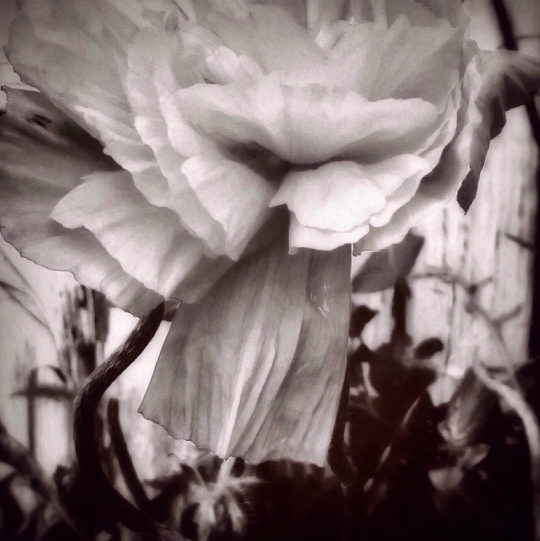
‘The Newborn, 16: Pleasure Ground’ – ©Meri Walker – LongExpo, Oggl, Perfect B&W, TouchRetouch, Afterlight
Where do you see the future of mobile photography?
As a mature artist who has studied and taught the history of photography, owned all kinds of cameras and printmaking tools over four decades, and been trained to view things with an anthropologist’s eye, I see mobile photography as the beginning of the end of traditional photography. But I’m not selling my point of view.
Given the path my life has taken, what I see these days is that once a human being realizes that the “phone” in their pocket is actually a node on one globally “networked lens,” that human being’s role as a communicator is forever changed. So are his or her ideas of “authority” and “ownership” of personal, creative expression. And that’s a very big deal.
Not to get weird about it, but I see mobile photography as the gateway to a whole new world. A way of living that we only barely comprehend. A smartphone is so much more than a personal camera or a personal computer. It’s a ticket to real-time shared mind. And, more importantly, to shared heart. Having a mobile device in their pocket allows human beings to capture the “news” of our daily experience and share our personal stories. These stories are often far more interesting – and more life-enhancing – than the mainstream media’s trance of money, entertainment, and war.
Now that almost every person on the planet can capture and share their “view” – using a small mobile device that runs free or very cheap apps – the human race is poised for the dissolution of the news business, the gallery art business, the business of advertising, even government as we have known it. This is why we’re experiencing such daily chaos across the globe. We’re standing on the threshold of a whole new world. I see this thing we’re now calling “mobile art” as one of the harbingers of that world. Ray Kurzweil, a director of engineering at Google, calls that new world the “Singularity.” It’s a terribly exciting time to be a visual artist!
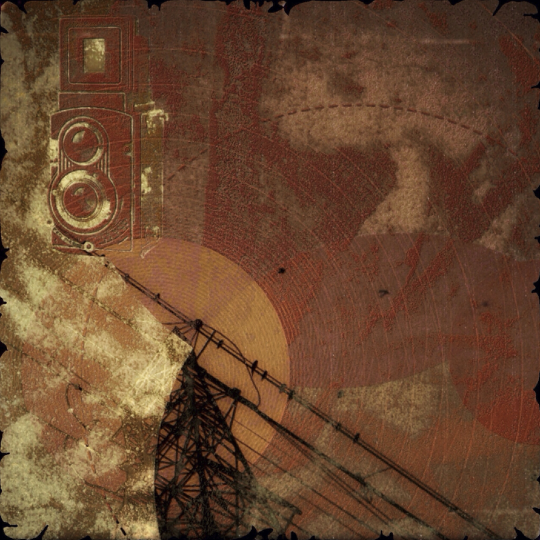
‘Messages Under the Bridge, 6: Any Port In A Storm’ – ©Meri Walker – Apps used – Hipstamatic, Tangent, AdLibX,PaintFX, Layover
What do you think is the most popular area of mobile photography?
I consider myself very much a newcomer to the mobile art community, so I wouldn’t pretend to know what’s most popular with other mobile photographers. I certainly see a resurgence of fascinating black-and-white street shooting and a lot of mesmerizing multi-layered images that combine elements of photographic realism with painting and drawing. But maybe I see those areas most clearly because those are the two areas where I spend most of my time.
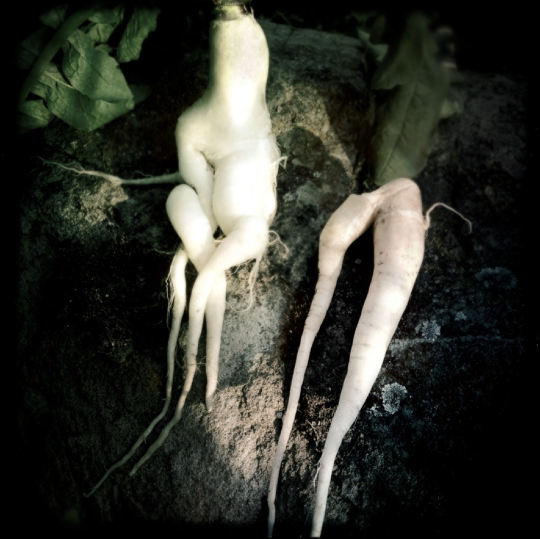
‘Me and Mrs. Jones, We Got a Thing Goin’ On’ ©Meri Walker – Apps used – Hipstamatic, Snapseed
Do you think it’s country specific, are some nations more clued up?
I have engagement with people who love mobile art all over the world. That’s one thing I love about this field. I do see that Europe is more clued into the “art” conversation than we are yet in the US. Australia and Japan are hotbeds of experimentation. So is Latin America. Indian photographers and folks in the Middle East are following and engaging with me a lot on EyeEm and Flickr. The only continent where I don’t see much action is Africa, but I’m not well-connected there in other ways, so I may not see what’s happening there. There seems to be a global curiosity and excitement about the possibilities of mobile photography.
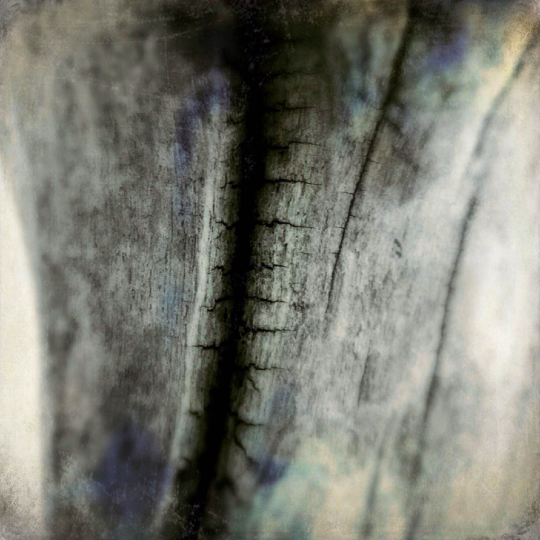
‘Love Is A Wound That Never Heals’ ©Meri Walker – Apps used – Hipstamatic, AfterFocus, Snapseed
If you could select a specification for a mobile smartphone, what features would you select, photographically speaking?
I would relish having a higher resolution camera lens, more storage capacity, more battery capacity, and much higher resolution app output.
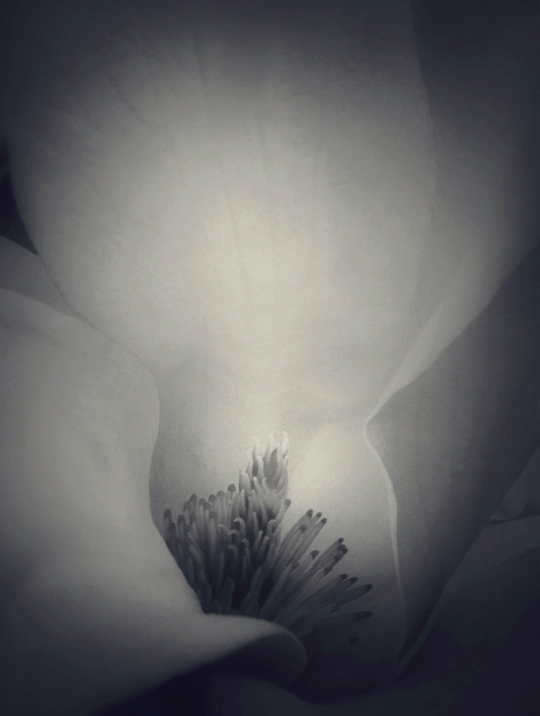
‘Like a Virgin’ – ©Meri Walker – LongExpo, Snapseed, Monokrom, Perfect B&W
What do you think of Joanne and theappwhisperer.com?
When I got my iPhone4, late in 2010, I didn’t show a soul what I was doing with it for over 18 months. I kept poking around online, looking for information about apps and found TAW after a while. TAW has been a mainstay for me from the first moment I found the site. The news and the archives have been an invaluable resource and a constant inspiration. Joanne deserves to be sainted for holding space for the deliberate aggregation of mobile art information and the continuous revelation of “serious” smartphone artists. TAW has made it possible for thousands of English-speaking people to learn a brand new way of relating to themselves, their human creativity, and the world around them.
Links To Apps Used or Mentioned in This Interview
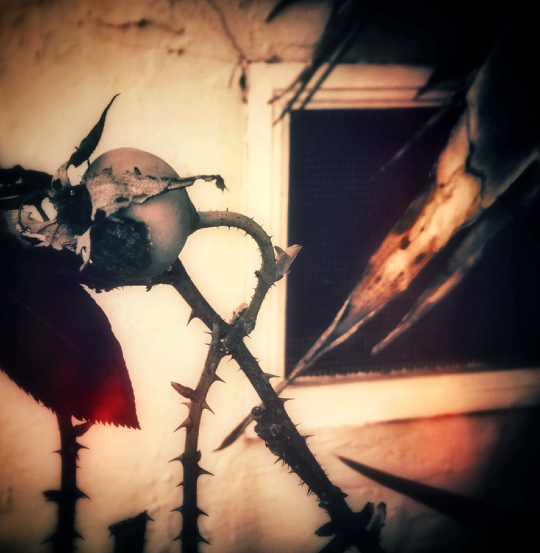
‘In the Blood of Eden’ – ©Meri Walker – Apps used – Oggl, Snapseed, BlurFX
Camera+
ScratchCam
LongExpo
Oggl
Perfect B&W
TouchRetouch
Afterlight
ClearCam
Snapseed
Monokrom
Analog Film
Perfect B&W
AfterFocus
Hipstamatic
PhotoViva
Superimpose
iColorama
Old Photo
Glaze
ClearCam
Textures+
Lens Light
Juxtaposer
FocusPlus
BlurFX
Plastica
VintageScene
Diptic
Phonto
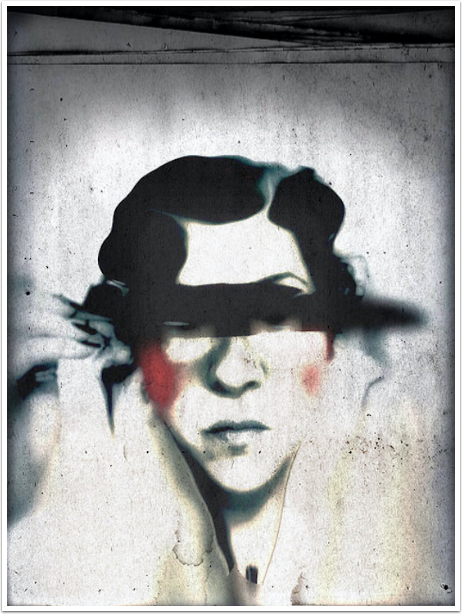

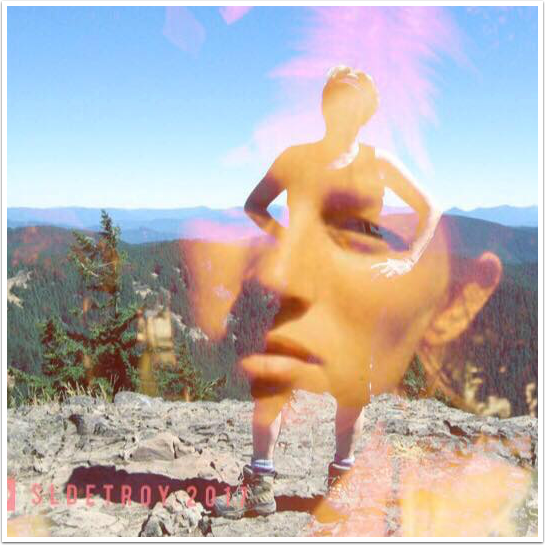
25 Comments
Tracy Mitchell Griggs
Phew. What an arc! And interesting to hear that you’ve returned to alternative print production – all things circle back around. Great interview and gallery – we certainly will look for more to come.
Meri Walker
Tracy, I’m not sure what you’re wanting more of, but I promise, I cannot stop exploring the present moment using my iPhone and iPad…so I’ll meet you in the next moment, honey.
Tracy Mitchell Griggs
Still processing all your information 🙂 Do you have your 4 decades of images catalogued and archived anywhere (including your foray into mobile photography?) Am still wondering why your mother would say there “were no artists in the family”? This reminds me of statements made to my most recent project as photo book editor and marketer for a photographer with 3 decades spent as a photographer – his guidance counselor in high school told him to avoid “creative” professions as he had no aptitude. He went to law school as a result and was miserable for ten years working as an attorney before literally turning his sights to a career as a photographer and now photo educator:
http://www.horizonworkshops.com and http://www.privypublishing.com. What is most shocking is that his father, William P. Gottlieb’s images are with Corbus and the Library of Congress – images found in the landmark portrait book of jazz greats – The Golden Age of Jazz – glad you are teaching young people – the world needs more creativity, not less.
Rob Pearson-Wright
Love Meri, love her work and love the interview. Thanks for bring it to us Joanne.
Meri Walker
How many ways can I tell you I love you, Rob Pearson-Wright? Your vision – and your humor – nourish me deeply.
Susan Rennie
I am absolutely dazzled and in awe of Meri Walker as revealed in her App Whisperer interview. Thank you so much for allowing this neophyte iPhoneographer to be so inspired.
Meri Walker
Susan, as I’ve already said, I want to meet you on Venice Beach and just watch you interact with the folks you find there to photograph with your iPhone. I don’t know what “neophyte” means. I know I see an amazing street portraitist working every time you post your explorations of your home space. Namaste, new friend.
Maria Gjonaj
Oh Meri! I just finished reading your interview and I’m in awe. At all you’ve done and are doing. Thanks so much for sharing so much of yourself, your opinions, perspective. It will take me some time to fully digest this very rich interview..Thanks so much!
Meri Walker
You, Maria Gjonaj, are the sweetest possible place to share truth. And beauty. Because you refuse to sully them with opinion. How would any of us carry on in the continuous exploration of the unknown moment without your sweet love? I honestly don’t know…
Stef lP
Loved reading this….
Meri Walker
Don’t know you yet, Stef, so I’m supremely honored that you took the time to read this interview. How can I see YOUR work?
Damian de Souza
Congratulations on this feature, Meri. Absolutely fascinating to learn about your life and thoughts, and the many avenues you have travelled.
Meri Walker
Damian, I am slain every time you post an image… anywhere you post. I am flabbergasted at your courage and your skill.
Geri
Fabulous interview…so much wonderful info and more of a glimpse into Meri and her work. Thanks for bringing this to us Joanne.
Meri Walker
Geri, your continuous vigilance and the care with which you hold the space for painterly mobile art is an inspiration to all of us in this community. Bless you for that.
Jelly Beans
Fantastic Interview. Someone I’d like to meet…
Meri Walker
Hi Jelly Beans! How can I meet you? See your work? Share in your special sauce?
Meri Walker
I’ve been teaching teenagers all week, Joanne, and all the rest of you lovelies who have taken the time to respond to this interview. Friends I already know and friends I’ve yet to know. thank you all 10,000 times for connecting with me at the level of our deepest hearts through our creativity. I grew up in a time when my transistor radio was my only connection to the world beyond my home… so, when I can share my work online, using the camera that I used to capture an image that I also imbued with my love and my truth, I am in absolute heaven. I want to meet you all in person, share a coffee or a beer or a glass of wine, and celebrate our mutual participation in this impossible revolution we call “mobile art.” You honor me with your attention and your love.
David Pasillas
What a great interview. Your story and your approach are inspiring, Meri. I look forward to seeing you again soon. When I get moved up to Medford, later this year, I hope we can find time to work together, and push the limits of our creativity.
Meri Walker
David, I would love to work with you, dear. So young and so talented you are. Thanks for your kindness, always.
Sandraakaviolet
Meri sweets! And me posting my view’s of your view’s! I feel so embarassed by all this long life story of yours ! Thank you for allowing me to think I was playing photo games with you! Blessed heart you have got my dear! I humbly bow my head now. Thank you. Sandra❤️
Meri Walker
Dear, dear Sandra. I don’t know what there is to be embarrassed about. You have been such a wonderful learning partner from my earliest days in EyeEm and I treasure your creativity and your friendship. Kind of you to read all this, dear one. Let’s keep playing photo games, okay? I learn a TON playing them!
Brynze
Incredible interview! Thanku!!
Eloise Capet
Such a wonderful interview. Congrats Meri. I am pleased to better know you through your words.
meri walker
Going back through the archives today and seeing that I never thanked you for taking time to read all this, Eloise and Brynze. Many thanks for your support.